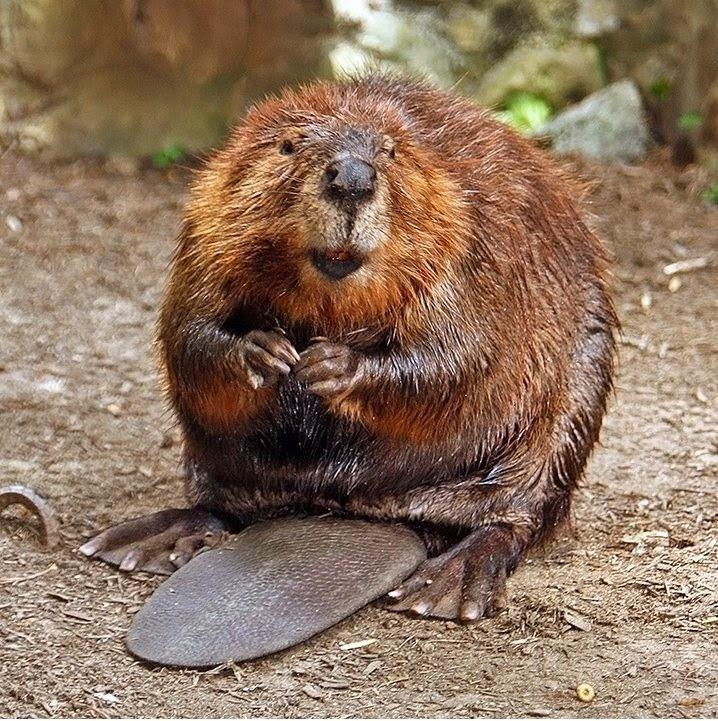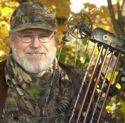This is the fifth article in a series on Kentucky furbearers.
Beavers are nature’s water conservationists, but their handiwork can causes problems. Beavers become a nuisance when their gnawing on trees and dam-building activities are in conflict with human activities.
To the ire of farmers, beavers dam up ditches and creeks, flooding crop fields. The view from many a farmhouse or vacation home has been compromised by beavers killing or felling trees along a scenic waterway.
They dam up culverts, flooding roadways. And where their numbers swell, beavers move into semi-rural suburban areas, building lodges on subdivision or golf course lakes, felling trees and gnawing down shrubs on manicured lawns.
But for all the damage and destruction they can cause, beavers also create habitat for fish and wildlife, and improve water quality.

On large tracks of undeveloped land such as state and national forests, parks, nature preserves, wildlife management areas and wildlife refuges, they rearrange the landscape, and in the process benefit a number of terrestrial and aquatic species of wildlife.
Cutting trees opens up the forest canopy, bringing in light that stimulates the growth of herbaceous plants and shrubs needed for food and cover by deer, rabbits and other wildlife.
The ponds they build become wetland habitat, used by fish, frogs, salamander, and other aquatic life. Where beavers build their lodges in the center of ponds, they create a place for resident Canada geese to nest and raise their young, safe from foxes, coyotes and other ground predators.
When streams are dammed creating shallow ponds in muddy forested lowlands, water quality is enhanced as sediment settles, increasing water clarity. Their dams also help to stabilize water levels during the dry months.
The food chain created by beaver ponds supports herons, kingfishers, ospreys, and migratory waterfowl, that stop to feed and rest while flying to and from wintering and nesting grounds. The trees that die as a result of rising water levels attract insects, which in turn feed woodpeckers, whose holes later provide homes for wood ducks, raccoons and other wildlife.
North America’s Largest Rodent
The North American Beaver (Castor canadensis) is the continent’s largest rodent. Its range includes most of the U.S. (absent from parts of Florida and the arid Southwest), Canada and Alaska.
This semi-aquatic mammal is a herbivore, eating a variety of aquatic plants, and the soft inner bark, leaves, and twigs of trees, including sweet gum, black gum, maple, alder, cherry, willow, and other deciduous trees. They also consume shrubs, ferns, grasses, and row crops, including corn and soy beans.
Beavers have large, sharp, upper and lower incisors, which are used to cut trees and peel bark while eating. Their incisors are harder on the front surface than on the back, and so the back wears faster. This creates a sharp edge that enables a beaver to easily cut through wood.
Beavers that live in cold climates store branches of food trees and shrubs for winter use by shoving them into the mud at the bottom of ponds or streams near the entrance to their bank den or lodge.
They construct burrows in the banks of rivers or lakes, but may not build a lodge. Bank dens may be located under stumps, logs, or docks. Beavers living on water bodies that maintain a constant level, such as major reservoirs or large rivers, do not build dams.
Lodges are built in the shallow ponds they impound. Lodges consist of a mound of branches and logs, plastered with mud. The basic interior design of the lodge varies little and consists of one or more underwater entrances, a feeding area, a dry nest den, and a source of fresh air. Underwater entrances keep them safe from predators.
Beavers construct a channel system leading to their ponds, using them to float food, such as small, trimmed trees, from cutting sites. With receding water levels during summer, beaver activity shifts toward building and maintaining channels to access new food supplies. Channels often look man-made, have soft, muddy bottoms, and are filled with 15 to 25 inches of water.
Beaver dams are constructed and maintained with whatever materials are available, including branches and leaves, logs, mud, and stones.
Description and Life History
Adult beavers average 40 pounds in weight and measure more than three feet in length, including their tail.
Coloration ranges from reddish brown to almost black, with webbed hind feet and broad, flat, scaly tail.
While they have poor eyesight, beavers have a keen sense of smell and use it to detect predators, find food and recognize family members. Beavers are nocturnal, but are occasionally active during the day. They do not hibernate, but are less active during winter, spending most of their time in the lodge or den.
A mated pair of beaver will live together for many years. Breeding occurs during the winter, January and February, and litters of one to eight kits (average four) are born between April and May.
The female nurses the kits until they are weaned at 10 to 12 weeks of age. Most kits remain with the adults until they are almost two years old.
Beavers live in colonies that may contain as many as 12 individuals. The colony is usually made up of the adult breeding pair, their young from several years. If startled, a beaver will go underwater, but usually re-emerge within a few minutes However, beavers are able to remain underwater for at least 15 minutes by slowing their heart rate.
For more outdoors news and information, see Art Lander’s Outdoors on KyForward.
Beavers have a broad, flat tail that doesn’t show behind them when swimming. To warn each other of danger, beavers slap their tails against the water, creating a loud splash.
The tail of a large beaver may be 15 inches long and six inches wide. It is covered with leathery scales and sparse, coarse hairs. In the water, the animal uses its flexible tail as a four-way rudder. On land, the tail acts as a prop when a beaver is sitting or standing upright. It also serves as a counterbalance to support the beaver when walking on its hind legs while carrying building materials with its teeth, front legs, and paws.
The tail stores fat, and because it is nearly hairless, releases body heat, helping the beaver to regulate its body temperature. Beavers stand their ground when cornered on land. They face the aggressor, rear up on their hind legs, and hiss or growl loudly before lunging forward to bite.
Beaver Pelts
At one time beaver pelts were economically important, and were exported from North America during the Fur Trade era, which ended in the mid-1800s. The demand for beaver pelts in Europe, for use in making hats, ultimately drove the animal to near-extinction, and was a major factor in the exploration and settlement of Canada.
It is believed that the beaver population in North America before European settlement was more than 100 million. Today the continental population estimate is near that level.
Weak demand from major fur buyers in China and Russia, caused by economic down turn, has depressed all fur prices, including beaver. In Kentucky, beavers may be trapped during a 106-day season, which ends February 29, 2016.
There is no limit on the number of beavers that can be taken. If properly prepared, the flesh of beavers is excellent table fare.
For details on Kentucky’s furbearer seasons, and harvest regulations for hunting and trapping, visit www.fw.ky.gov. Click on 2015-16 Hunting and Trapping Guide.
Despite all its conflicts with humans, the beaver is one of Kentucky most fascinating furbearers.
Art Lander Jr. is outdoors editor for NKyTribune and KyForward. He is a native Kentuckian, a graduate of Western Kentucky University and a life-long hunter, angler, gardener and nature enthusiast. He has worked as a newspaper columnist, magazine journalist and author and is a former staff writer for Kentucky Afield Magazine, editor of the annual Kentucky Hunting & Trapping Guide and Kentucky Spring Hunting Guide, and co-writer of the Kentucky Afield Outdoors newspaper column.






















